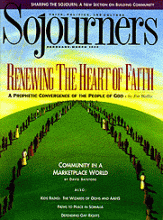On January 17, 1893, U.S. Marines overthrew the last ruler of the Kingdom of Hawaii, then an independent nation recognized by the United States and others.
One hundred years later, Native Hawaiians, who comprise nearly 20 percent of the state's population, are the only indigenous people in the United States still not recognized by the federal government--and they are the poorest, least educated, and unhealthiest of Hawaiians.
A movement for Native Hawaiian sovereignty has burgeoned as the the anniversary of the overthrow nears, some calling for a "nation within a nation" approach similar to that granted American Indians and Inuits (Eskimos), and others working for complete independence and "decolonization."
Rev. Kaleo Patterson, a Native Hawaiian, was a United Church of Christ pastor on the island of Kauai and president of the Hawaii Ecumenical Coalition when this article appeared.
-The Editors
Hawaii's last reigning monarch, Queen Liliuokalani, made a passionate plea as she yielded her constitutional authority to a group of 13 white men bent on a U.S. annexation and pro-business venture following the 1893 coup:
To prevent the shedding of the blood of my people, natives and foreigners alike, I oppose armed interference, and quietly yield to the armed forces brought against my throne and submit to the arbitrant of the government of the United States the decision of my rights and those of the Hawaiian people. Since then, as is well known to all, I have pursued the path of peace and diplomatic discussion, and not that of internal strife.
Read the Full Article

